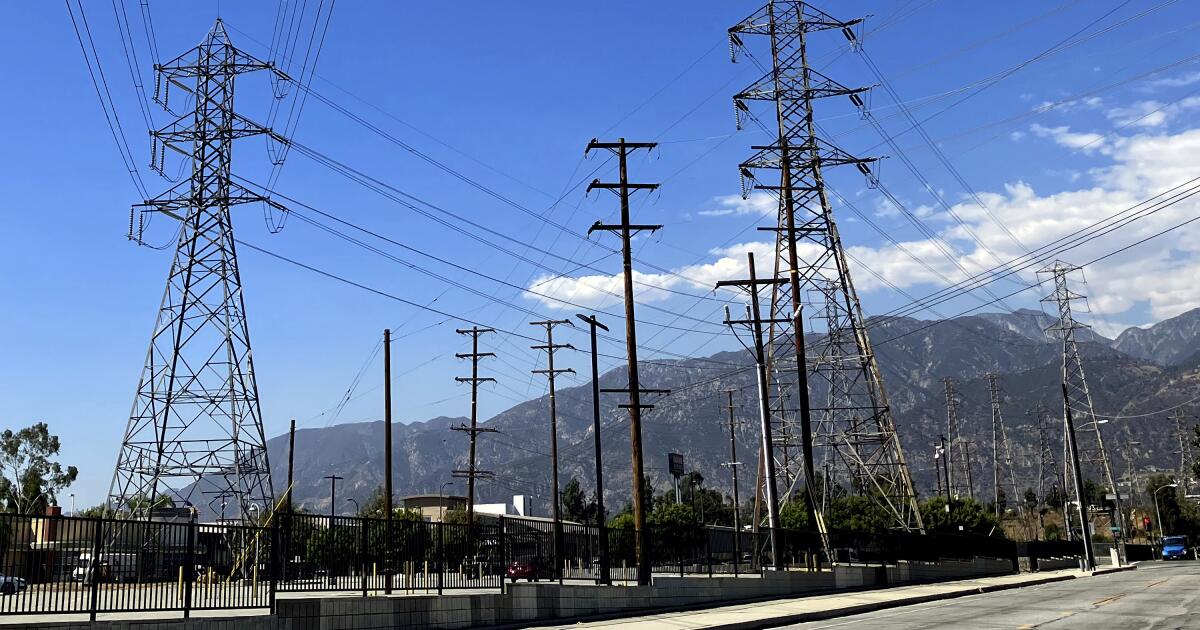Copyright Los Angeles Times

The artificial intelligence trade that has driven the S&P 500 Index to one record after another over the past few years is transforming traditionally sleepy utilities stocks into booming growth plays. Since the end of 2023, the utilities sector has been up 44%, making it the third-best-performing group in the S&P 500, behind only communications services and information technology. Those three also lead this year, with utilities gaining 21%. Before this run, the S&P 500 Utilities index, which has hit numerous all-time highs in the past few months alone, had never posted 20% gains in back-to-back years, according to data compiled by Bloomberg that starts in 1990. The logic behind this rally is simple. If AI is going to be the growth engine of the US economy for the foreseeable future, it will require enormous amounts of energy to power the data centers supporting it. So the companies that produce and sell this energy are going to benefit alongside the companies developing and deploying AI. “We are exposed to the utilities that are independent power producers for the precise reason that they seem like maybe a better way to play AI,” said Brad Conger, deputy chief investment officer at Hirtle Callaghan & Co., which has $25 billion in assets under management. Perhaps not surprisingly, the best-performing stocks in the utilities index this year are independent power producers. NRG Energy Inc. is up 85% in 2025, placing it among the top 10 leaders in the S&P 500, just below chipmakers Intel Corp. and Advanced Micro Devices Inc. Meanwhile, Constellation Energy Corp. has gained 65% and Vistra Corp. has jumped 41%. Up until recently, utilities were considered a sleepy corner of the stock market that’s used for defensive positioning by investors because their high dividends generate reliable cash during downturns. The best year for the S&P 500 utilities index was at the start of the dot-com meltdown in 2000, when it posted a 52% return while the overall S&P 500 dropped 10%. Utilities also outperformed the market during the global financial crisis in 2007 and 2008, as well as in 2022, when the S&P 500 sank as the Federal Reserve started aggressively raising interest rates. What’s interesting about this rally, however, is that it’s coming when the stock market is in the midst of a three-year bull run and other typically defensive sectors are lagging. The consumer staples and health care groups, which usually hold up during bear markets because they offer products and services that people need regardless of economic circumstances, are up less than 6% this year. And real estate stocks, which like utilities typically pay big dividends, have gained just 4.4%. Investors don’t appear to be buying utilities right now because of their dividends either. The dividend yield on the sector has fallen to about 2.6%, lower than it was during the dot-com meltdown, according to data compiled by Bloomberg. The yield is falling because the share prices are rising so fast that investors are suddenly paying a steep cost to buy into the group. “It’s getting caught up in the momentum trade and becoming part of the high beta trade,” said Kevin Gordon, head of macro research and strategy at Charles Schwab & Co. “Momentum doesn’t discriminate when it comes to sectors.” Those gains also make utilities stocks riskier than ever and more reliant on economic conditions. Should spending on AI slow, or worse get cut off even temporarily, those shares will have to be repriced just like everything else tied to the boom. “If the AI thesis gets dented, then they’re gonna be punished,” Hirtle Callaghan’s Conger said. In addition, the sector’s choppy trading is making it less attractive as a hedge against big market swings, Conger said. “We also build low-volatility portfolios, and normally those would’ve had a lot of utilities — it would’ve been health care, staples, utilities and a little bit of REITs,” he said. “But looking forward, we would dramatically shrink the weight of utilities because we know they’ve become more geared to the cyclicality of the AI story.” Whether this shift to cyclicality is a long-term change for utilities or an AI blip remains to be seen. But in the meantime, they’re behaving like the tech growth stocks they’re literally powering. So investors seeking safety will have to look elsewhere. “Utilities have a healthy outlook, because obviously demand is rising, they are getting their prices increases from the public utilities commissions,” said Louis Navellier, chief investment officer of Navellier & Associates. “I think utilities are going to be a conservative growth industry. Your best defensive sector now is gold stocks, for sure.”



